Today’s region of Friuli-Venezia Giulia had been a pawn in the game of different rulers and countries over the entire duration of its history in different geographical combinations. It only took its contemporary form 1963 becoming an autonomous region with special statute somewhat similar to Trentino-Alto Adige. Italian as an official language aside, Slovenian, German and the Friulian language enjoy minority protection. The region’s culture and nature couldn’t be more multifaceted bordering on two countries, with the long coast of the Adriatic Sea in the south and the Alps in the north. Enough said, you have to see the following top 10 sights of Friuli-Venezia Giulia!
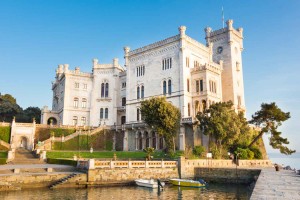
©Bigstock.com/kasto
Miramare Castle
You can see the influence the Habsburgs had on the region just a few kilometres outside Trieste. Located directly at the sea on a cliff of the bay of Grignano, Miramare Castle, which was built with Istrian limestone, rises high into the sky. The former ruling castle of the Mexican Emperor Maximilian I later turned into the Habsburgs’ summer residence nowadays houses a large art museum. The approx. 22 ha large garden is particularly worth seeing. Part English park with forest, part Italian garden, you are certain to fall under the spell of Mediterranean and exotic plants.
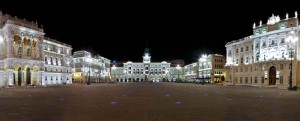
©Bigstock.com/Baloncici
Piazza dell’Unità d’Italia in Trieste
There are many city squares, but only Piazza dell’Unità d’Italia borders directly at the sea while being stunningly beautiful at the same time. The architectural heart and soul of Trieste is framed by genuinely magnificent neoclassical buildings on three sides. Said buildings include Palazzo del Municipio, the monumental city hall. It shines brightly once the shadows of the night lay their dark veil on Trieste. There’s also a small fountain with a pillar of Charles V, Holy Roman Emperor, who used to advocate for the free port, in the middle of the square. And there’s also the small but nice baroque corner – so much to discover here!

©Bigstock.com/bepsimage
Basilica di Santa Maria Assunta in Aquileia
Taking a small detour south of Strada Statale 14, you arrive in Aquileia, a former Roman metropolis. Among the town’s several historical sights, the medieval basilica, declared UNESCO World Heritage Site, stands out. After all, you get to see Italy’s probably most important early Christian mosaics here. These floor mosaics date back to the time of Bishop Theodore around 300 AD. Later parts of the church only constructed in the 11th century were built above the mosaics. You can view the subterranean, nowadays slightly bumpy terrain by glass runways.
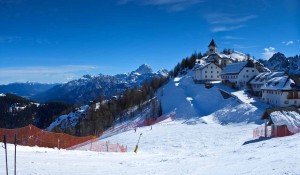
©Bigstock.com/msv
Mount Lussari near Tarvisio
Tarvisio is located just behind the Carinthian border in the middle of the border triangle between Italy, Austria and Slovenia. Take the modern cable car from the frazione Camporosso up to Mount Lussari. Many moons ago, up to 100,000 believers went on a pilgrimage to the large church, which has retained its lordly aura. Fascinating sacral buildings aside, you come across one of the region’s nicest hiking areas up here. Lace up your hiking boots and go exploring at an altitude of 1,790 m!
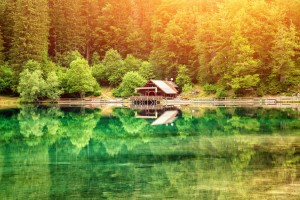
©Bigstock.com/and.one
Lakes of Fusine near Tarvisio
A true paradise of nature is waiting for you around Tarvisio. Interested in another yet example? The Lakes of Fusine or Laghi di Fusine are located right below the north face of the Mangart, an impressive 2,677-m high collection of rocks. Mountaineers and trekkers loves these lakes connected below earth around which a 45 ha large nature park lies. You have a grand view of the mountain pasture from the upper lake of Fusine surrounded by wide meadows and cool forests – simply divine when you want to let your spirits flow for a little while.
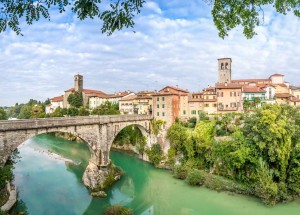
©Bigstock.com/milosk50
Cividale del Friuli
When standing in front of town hall, you’ll notice a statue of Caesar. You’d like to know more about its backstory? He once gave the Celtic settlement Cividale del Friuli town status. You can still find many a document of this era here. The massive three-nave cathedral, however, was built in the 14th century. Museo Cristiano grants deep insights into Lombard culture including frescoes and sgraffiti worth seeing. See parts of the legendary Codex Reichenau in the national archaeological museum.
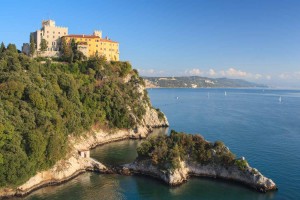
©Bigstock.com/bepsimage
Duino Castle
How often can you view a castle that is still inhabited? Duino Castle, built in the late 14th century, belongs to the noble family Thurn and Taxis; to Prince Carlo Alessandro, to be precise. A museum inside the chateau and the large park were opened to the public, partly to commemorate poet Rainer Maria Rilke, who wrote his Duino Elegies here. A Rilke Path runs between Duino and Sistiana capturing the entire force of his mystical elegies with its natural glory.
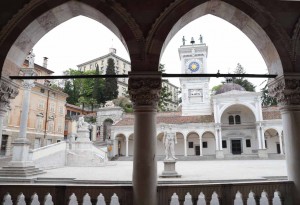
©Bigstock.com/MattiaATH
Piazza della Libertà in Udine
Udine’s oldest square is the centre of architectural peculiarities. No matter which direction you turn to, you can see impressive architecture on all sides of Piazza della Libertà. Take, for instance, the city hall Loggia del Lionella, a glorious example of Venetian Gothic, or the Venice-inspired bell tower. Numerous statues and fountains line both the square and Loggia di San Giovanni with its fine Renaissance touch. Where to start?
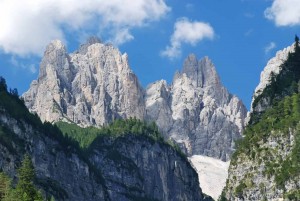
©Bigstock.com/Pablo Debat
Regional Natural Park of Friulian Dolomites
Your enthusiasm for the nature of Friuli-Venezia Giulia knows no limits? That’s awesome, because here we already have the next local recreational area for you! The Regional Natural Park of Friulian Dolomites stretches across 36,950 hectares. Long hiking trails, characteristic alpine creatures and many a sight are waiting for you with the Dolomite summits, a UNESCO World Heritage Site, serving as your backdrop. Fossil dinosaur marks, erosional phenomena, bird life – variety is guaranteed.
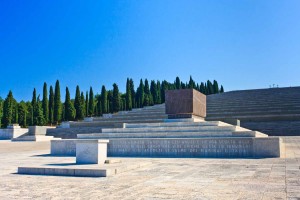
©Bigstock.com/Zechal
Sacrario di Redipuglia
Italy’s largest war monument is located in the northeast-most part of the country. Sacrario di Redipuglia is a huge mausoleum holding the remains of approx. 100,000 soldiers fallen in World War I. The Sacrario is located on a small hill. Appearing insignificant at first glance, it was the site of brutal combats during the Battles of the Isonzo. All graves are embedded in a large staircase of sorts with 22 stairs arranged like a gigantic place of muster. The fallen soldiers signal their presence by the writing “Presente”, Italian for “Present!” on the gravesites. The tomb of their commanding officer, Emanuele Filiberto, 2nd Duke of Aosta, is located right on top of the stairs.
Friuli-Venezia Giulia knows to impress with its natural variety and an architectural foray through history. Don’t miss out on this very special travel destination and discover many more holiday options in Italy with the pointers by ZAINOO!